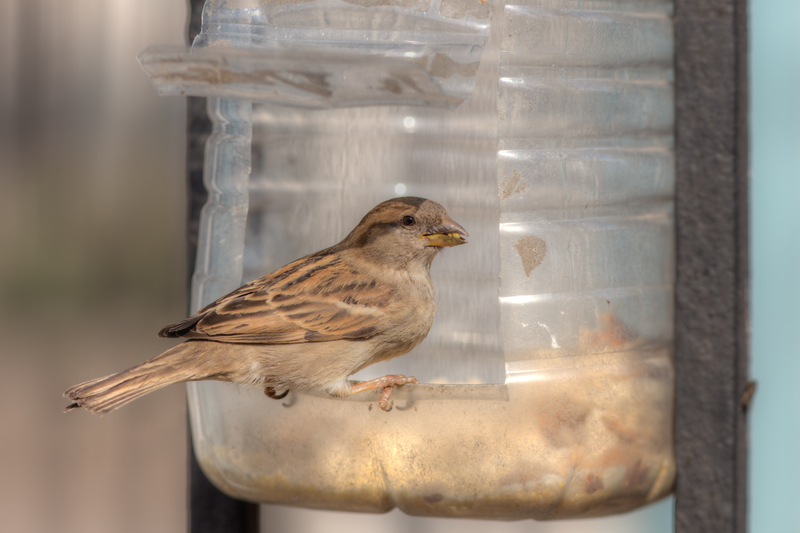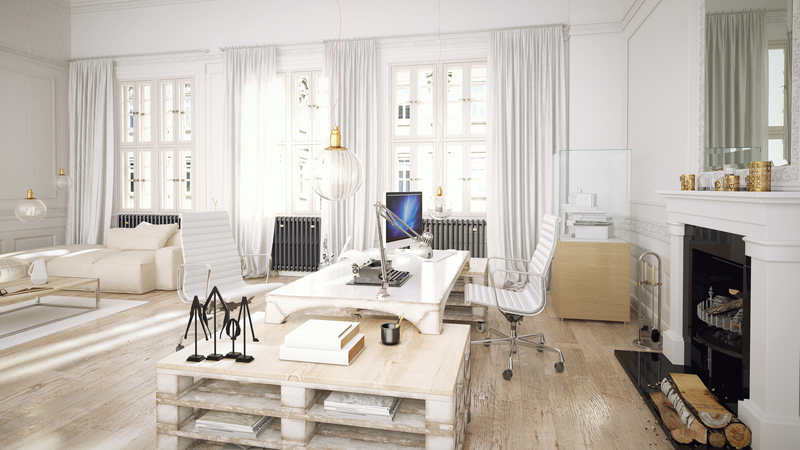From Landfill to Lovely: Creative Ways to Upcycle Preloved Objects
Upcycling is more than a trend--it's a movement that helps us transform unwanted items into valuable treasures. With growing environmental concerns and a desire for unique, personalized items, upcycling has come to the forefront as an eco-friendly way to breathe new life into preloved objects.
Are you ready to take the leap from "landfill" to "lovely"? In this comprehensive guide, we'll explore innovative ways to upcycle household items, furniture, fabrics, and so much more, all while fostering sustainability and creativity in your daily life.
Why Upcycle? The Benefits of Giving Preloved Objects a Second Chance
Upcycling preloved objects reduces waste, saves resources, and inspires creativity. This eco-conscious approach positively impacts both your home and the planet. Here are some compelling reasons to upcycle:
- Environmental Impact: Diverts waste from landfills and reduces the need for new materials.
- Cost-Effective: Turns everyday items into useful or decorative products for little to no expense.
- Creativity Boost: Allows you to express yourself and develop new skills.
- Unique Results: Creates one-of-a-kind pieces that stand out from mass-produced goods.
- Community Building: Encourages sharing and collaboration, especially through swap meets and upcycling groups.

Getting Started: Gathering Preloved Objects for Upcycling
You may be surprised by how many potential upcycling projects are hiding in your home or waiting for discovery at thrift stores, garage sales, and flea markets. Look for items such as:
- Worn-out furniture
- Old clothing and textiles
- Glass jars and bottles
- Wooden pallets
- Bicycles and spare parts
- Mismatched crockery
- Vintage suitcases
Tip: Examine each object for potential beyond its original use. Think about its materials, shape, and what it could become with a little imagination.
Creative Ways to Upcycle Preloved Objects
1. Old Furniture: Reimagine, Refurbish, Reuse
Furniture is one of the most rewarding things to upcycle. Even worn or unattractive pieces can shine with a little care:
- Paint & Stain: Give tables, chairs, and cabinets a makeover with chalk paint or stains for a trendy distressed look.
- Repurpose: Transform a wooden ladder into a quirky bookshelf, an old door into a headboard, or a suitcase into a vintage side table.
- Combine: Use mismatched chairs together and paint them in a fun color palette for an eclectic dining set.
Upcycling furniture saves you money, lets you personalize your space, and helps reduce deforestation and landfill mass.
2. Textiles and Clothing: Fashion a Greener Future
Don't toss those tattered jeans or faded t-shirts! Upcycled fabrics can become:
- Pillows & Cushions: Sew patches together to create colorful covers for cushions.
- Rugs: Weave strips of old fabric into charming rag rugs.
- Bags & Totes: Convert denim or shirts into reusable shopping totes.
- Children's Toys: Use scrap fabric to make soft toys or plush animals.
Pro Tip: Learn basic sewing techniques to unlock even more upcycling possibilities!
3. Glass, Bottles, and Jars: Illuminating Ideas
Empty jars and bottles are versatile bases for upcycling projects:
- Vases & Planters: Paint and decorate glass jars to display fresh flowers or small succulents.
- Candle Holders: Fill glass containers with sand or pebbles for stylish DIY candles.
- Lighting: Convert wine bottles into pendant lights or string jars along pathways as lanterns.
- Tea Organizers: Use small jars to store herbs and teas, labeling them for organization.
4. Wooden Pallets: From Warehouse to Wow
Wooden pallets are a foundation for countless upcycled home projects:
- Garden Planters: Mount vertically for a space-saving herb or flower wall.
- Outdoor Furniture: Stack and top with cushions for pallets sofas or tables.
- Storage Solutions: Build shoe racks, bookcases, or toy bins.
- Bed Frames: Arrange pallets in a grid for a rustic, low-profile bed.
Remember to sand and seal pallets to remove splinters and prolong their life outdoors.
5. Tin Cans: Nothing to Waste
Don't discard tin cans! With a little creativity, they become rustic, charming, and functional:
- Pencil Holders: Cover with twine or fabric for desk organizers.
- Lanterns: Punch holes to create patterns for pretty outdoor lights.
- Kitchen Storage: Paint and label cans for holding utensils or herbs.
- Kiddie Drum Sets: Let kids make music with painted, upcycled tin cans!
6. Books: Turning Pages into Art
Damaged or outdated books can find new purpose:
- Folded Book Sculptures: Bend and fold pages to create mesmerizing shapes.
- Secret Storage: Hollow out thick books for hidden compartments.
- Wall Art: Use pages or covers as part of collages and shadow boxes.
- Journals: Refurbish old bindings to create handmade notebooks.
Fun Fact: Upcycling books merges literary appreciation with artistic flair!
From Drab to Fab: Inspiring Project Ideas for Every Room
Living Room Upcycle Inspirations
- Vintage Suitcase Tables: Stack and secure for unique side tables with storage.
- Repurposed Fabric Rugs: Give your floor color with upcycled textile rugs.
- Chair Planters: Hollow old chairs and plant flowers or ferns for a conversation piece.
- Bottle Cap Art: Arrange upcycled bottle caps as wall mosaics.
Kitchen and Dining Area Projects
- Drawer Organizers: Use wooden boxes or jars for utensil separation.
- Reclaimed Wood Shelving: Old planks or doors make rustic open shelves.
- Cupboard Door Boards: Offcut cupboard doors become chalkboards or message stations.
- Mismatched Dishes Art: Assemble discarded china into wall displays or clocks.
Outdoor and Garden Upcycling
- Tire Planters: Paint old tires and use them as raised flower beds.
- Bicycle Wheel Trellises: Hang wheels as modern plant supports.
- Milk Crate Benches: Zip-tie together crates and add a cushion for a movable seat.
- Rain Boot Planters: Plant colorful flowers in retired boots for whimsical garden decor.
How to Upcycle: A Step-by-Step Guide
- Choose Your Object: Find a preloved item that inspires you or serves a practical need.
- Research Ideas: Search online, in magazines, or on social media for upcycling inspiration.
- Prepare Materials: Thoroughly clean and (if needed) repair your object before starting.
- Plan and Design: Sketch your idea, gather additional materials, and consider colors/styles.
- Create: Paint, sew, glue, sand, or assemble according to your concept.
- Finish: Add sealants, coatings, or decorative touches to make your upcycled object last.
Pro Tip: Document each stage of your project with photos or a blog--this not only preserves your progress but may inspire others!
Upcycling for Kids: Teaching Creativity and Sustainability
Involving children in upcycling projects helps nurture creativity and instills environmental responsibility. Easy projects for kids include:
- Making puppets from socks or gloves
- Building birdhouses from cartons
- Decorating jars for homemade snow globes
- Painting and planting seeds in yogurt containers
Encourage experimentation and praise unique ideas--childhood upcycling can spark a lifelong passion for sustainability.
The Environmental Impact: Why Upcycling Matters
Every year, billions of tons of waste are sent to landfills around the world. Upcycling preloved objects helps reduce this waste, conserve raw materials, and cut down on pollution from manufacturing. According to the Environmental Protection Agency (EPA), reducing, reusing, and upcycling are critical strategies for meeting sustainability goals.
By prioritizing circular economy practices like upcycling, we:
- Decrease landfill overflows and greenhouse gas emissions
- Lower demand for energy-intensive raw materials
- Preserve water and fossil fuels
- Promote local craftsmanship and small businesses
- Encourage conscious consumerism
Where to Find Materials to Upcycle
Ready to start your next upcycling adventure? Consider exploring:
- Thrift stores and charity shops
- Community recycling centers
- Online marketplaces (e.g., Freecycle, Craigslist, Facebook Marketplace)
- Yard sales and flea markets
- Friends and family decluttering stashes
Remember, one person's trash is often another's treasure! Always check for safety and cleanliness before repurposing any items--especially when upcycling for food contact or children's use.
Tips for Successful Upcycling
- Start Simple: Don't tackle complex projects until you're comfortable with basic tools and techniques.
- Embrace Imperfection: The charm of upcycled objects often lies in their quirks and history!
- Involve Others: Join local upcycling workshops or online forums for support and idea sharing.
- Think Beyond the Obvious: A chair isn't always just a chair, and a jar can be much more than a container.
- Stay Safe: Wear protective gear when working with tools, paints, or when sanding.

Showcasing Your Upcycled Masterpieces
Once you have created your unique upcycled items, show them off! Here's how:
- Post before-and-after pictures on social media with hashtags like #upcycling, #preloved, and #sustainableliving
- Sell your upcycled products at local craft fairs or online
- Give upcycled gifts to friends and family for birthdays or holidays
- Host a community upcycling day to inspire others
Sharing your creations helps build awareness and sparks new ideas in your community!
Conclusion: Turning Preloved into Priceless
From landfill to lovely--upcycling is a powerful way to make an environmental difference and beautify our world. By embracing creative upcycling ideas, we transform discarded items into functional works of art, reduce waste, and inspire a more sustainable lifestyle.
Whether you're restoring furniture, reimagining old clothes, or building planters for your garden, every upcycled object is a small victory for both your creativity and the planet. So, gather those preloved treasures and join the movement--because turning the ordinary into the extraordinary is not just rewarding, it's essential for a greener future.
Happy upcycling!
